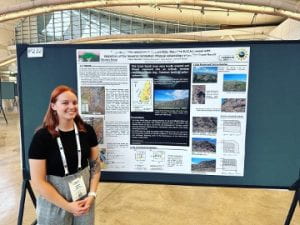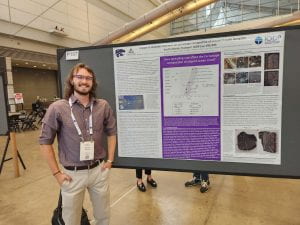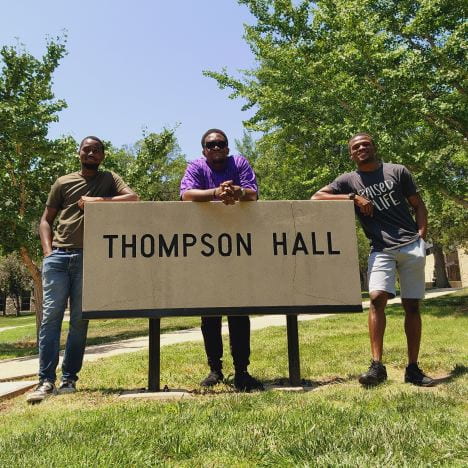Behzad Ghanbarian’s proposal among the EMSL awards
Soils, particularly near the earth surface, are composed of rich nutrients from organic plant materials and animal matter. It is believed that soils, especially agricultural soils, can adsorb carbon dioxide over a billion tons each year. The Figure below shows the US croplands with a 30m resolution derived from Landsat images. The US has 166 million hectares of net cropland area and is ranked second in the world after India. Therefore, soil-based carbon dioxide adsorption may be considered as a negative emission technology that naturally removes CO2 from the atmosphere. Dr. Behzad Ghanbarian’s proposal on soil-based CO2 sorption was selected as one of the EMSL large-scale research projects. Dr. Ghanbarian will be collaborating with scientists at the Pacific Northwest National Laboratory (PNNL) on this project to fight climate change.

For further information visit: https://www.emsl.pnnl.gov/news/emsl-awards-funding-32-large-scale-research-projects
Dr. Claudia Adam receives a National Science Foundation grant
Claudia Adam was awarded an ~$177,000 National Science Foundation grant (Structure and dynamics of the subcontinental lithospheric mantle over the Central and Eastern North American continent, constrained by numerical modeling based on tomography models).
Seismicity is generally concentrated at the margins of tectonic plates and is created by the relative motion between these plates. But earthquakes also occur within tectonic plates. In a project recently funded by the National Science Foundation, Dr. Claudia Adam is investigating the origin of these intraplate earthquakes. She is conducting numerical modeling of mantle convection based on tomography models which provide a 3D view of mantle structure based on variations in seismic velocity.
Kansas Department of Transportation funds Dr. Behzad Ghanbarian’s project
Aggregates have broad practical applications, particularly for concretes, hot mix asphalts, aggregate base construction, cement treated and granular bases, backfill, cover materials, microsurfacing, subgrade modification or reconstruction, surfacing or resurfacing, shoulder construction, and riprap and ditch lining. Although understanding geomechanical and mineralogical properties of aggregates are essential for many projects, our knowledge on crushed samples are very limited due to lack of experiments. In a recent project funded by the Kansas Department of Transportation (KDOT), Dr. Behzad Ghanbarian will investigate geomechanical and mineralogical properties of limestone samples from Kansas. In this project, Geology will closely work with the Civil Engineering Department at K-State as well as Petroleum and Chemical Engineering Department at KU.

Ikon Science Donates RokDoc Licenses to Kansas State University (Dr. Raef)
Industry software and data donations are among the resources for supporting current learning, teaching, and research endeavors, leveraging our faculty and students’ interests in careers-oriented K-State experience. Several members of our alumni contributed seismic reflection data and geophysical well logs to support the research and teaching in the areas of applied geophysics and energy resources. More information about this donation can be found here.
 At this year’s annual GSA meeting I presented research of the Jackson Hole volcanics in Northwestern Wyoming, specially the Flat Creek Basalt area. The focus of this research was to constrain the lava flow to either being a local eruption or not, and if it occurred over one episode or multiple. The reason we looked at this area was because it is the first known instance of a basaltic eruption prior to the Yellowstone Plateau Volcanic System developing. After going out to the field site and confirming the presence of at least one dike we were able to determine that this lava was locally erupted and happened in a singular episode.
At this year’s annual GSA meeting I presented research of the Jackson Hole volcanics in Northwestern Wyoming, specially the Flat Creek Basalt area. The focus of this research was to constrain the lava flow to either being a local eruption or not, and if it occurred over one episode or multiple. The reason we looked at this area was because it is the first known instance of a basaltic eruption prior to the Yellowstone Plateau Volcanic System developing. After going out to the field site and confirming the presence of at least one dike we were able to determine that this lava was locally erupted and happened in a singular episode. I had two poster presentations at the 2023 National GSA conference. The first one was over the “Impact of seawater alteration on Cu isotope composition of oceanic basalts along the South Atlantic Transect: IODP Exp 390/393” which I presented on the first day. The second was over “Lithium concentrations in Cenozoic rhyolite vitrophyres and quartz-hosted melt inclusions: implications for lithium deposits in the northern Great Basin (U.S.A.)” on the second day. I had a great time presenting both of these posters and had so many great conversations. I really enjoy connecting with others over similar work we have done or fun ideas on what the data may mean.
I had two poster presentations at the 2023 National GSA conference. The first one was over the “Impact of seawater alteration on Cu isotope composition of oceanic basalts along the South Atlantic Transect: IODP Exp 390/393” which I presented on the first day. The second was over “Lithium concentrations in Cenozoic rhyolite vitrophyres and quartz-hosted melt inclusions: implications for lithium deposits in the northern Great Basin (U.S.A.)” on the second day. I had a great time presenting both of these posters and had so many great conversations. I really enjoy connecting with others over similar work we have done or fun ideas on what the data may mean.






